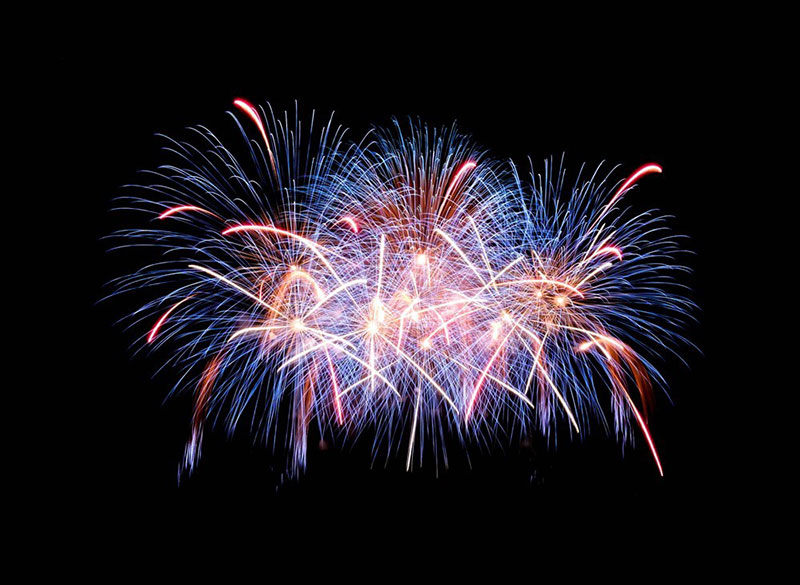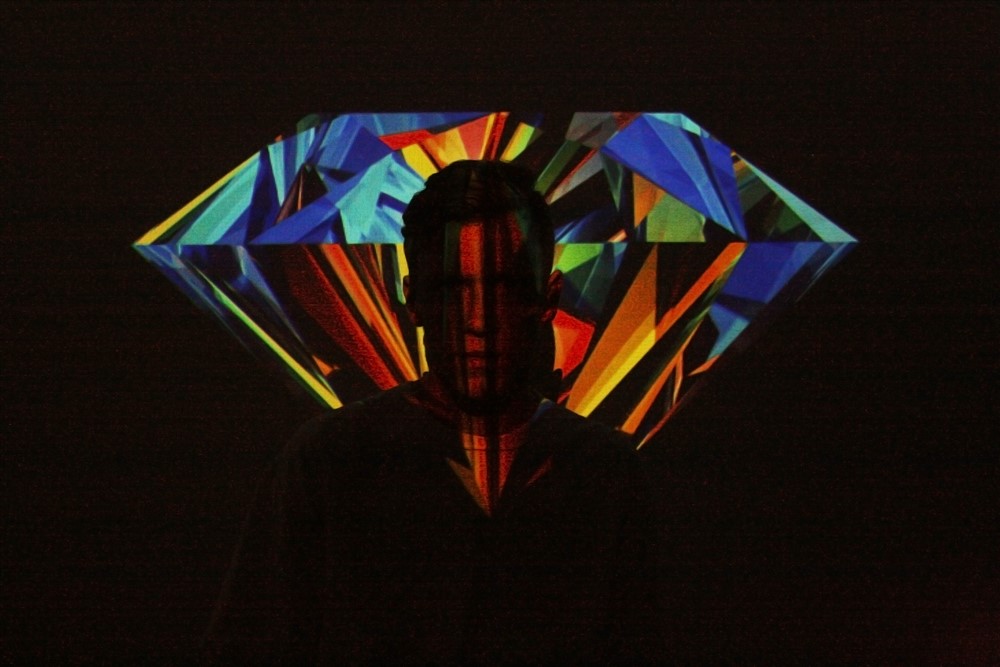What the heck is “diamond fire” and why should you even care? You might be thinking, isn’t just learning about the 4’Cs of diamond grading (color, cut, clarity, carat) enough? This is just pilling on! I feel your frustration. Let me take a stab at explaining diamond fire. After reading this, you can decide if you need to lose any sleep over it!
Think Fireworks

We just celebrated our Nation’s birthday (Fourth of July). In America, we have this crazy tradition of shooting off fireworks to celebrate certain National holidays. For almost two hours, the skies above our home in all directions were filled with shooting multi-colored sparks. This is the best metaphor (however lame) that describes what diamond fire looks like when viewed from the crown (top).
Think Bending
A diamond is like a prism. A round brilliant has 58 cuts (facets) including the culet (facet on the bottom point of the diamond). When light enters the diamond, it refracts (bends) according to how the diamond is cut. An Ideal Cut is the Mac Daddy of all cuts. These are what every piece of rough (a piece of rock containing diamond crystals) want to be when they grow up! Here are the recommended proportions for a round brilliant diamond that will produce a pleasing appearance.
- Table width percentage between 54%-60%
- Depth percentage between 59%-63%
- Crown angle between 33º-35º
- Girdle of 2.5%-4%
- Girdle thickness of Thin to Thick
The preceding diamond dimensions are averages. Poorly cut diamonds stray outside one or more of these norms. For example, if a diamond’s depth percentage is too shallow, say 50%, when the light enters it could exit through the bottom and not reflect back to the eye. This makes a diamond look dull and lifeless. Gemologists sometimes refer to this phenomenon as a window. When a diamond is too deep (carries extra weight on the bottom) the light is absorbed inside the stone. The diamond will appear dark in appearance.
Think Beauty

As the light bends and bounces around inside the diamond it produces three possible visual effects: 1. Scintillation. Flashes of white light moving across the diamond. 2. Brilliance. The overall appearance of the diamond. It can be bright or dull in appearance. 3. Fire. Flashes of spectral colors.
In my humble opinion (sometimes it’s not so humble…ask my wife!), fire in a diamond is like finding that bonus French fry in the bottom corner of the bag. You really don’t need it, but just when you thought there were no more, Voila, there it is! A properly proportioned diamond sparkles and shines and makes us want to do a happy dance. That would be enough for most mortals. But, seeing those colors of the rainbow reflecting back to your eye, is an extra special bonus.
Something To Consider
If you have ever shopped at an upscale jewelry store you know they use special lighting. Obviously, they want the jewelry to sparkle and shine. This is common practice and should not be viewed as an attempt to deceive the customer. I suggest when considering a diamond from a jewelry store, take it outside in natural light. That is where you will experience true diamond fire.
My Confession
As a former jewelry appraiser, I evaluated and graded thousands of diamonds. What a joy it was going to work every morning. I never knew what special gem or piece of jewelry would appear on my desk. It was especially satisfying to gaze into a diamond exhibiting flashes of fire. Trust me, it never gets old!
Okay, the time has come for you to decide if learning about diamond fire was worth it. You may be rolling your eyes right now thinking, this is little to do about nothing. That’s okay, you have a right to our opinion even when it’s wrong! (LOL)
For others, you are now “fired up” about learning this information. Maybe I am being a little over dramatic about the significance of this subject but that’s okay. A little drama never hurt anyone (ha! ha!). What a thrill to realize that diamond fire is only seen when light encounters cut in a very specific way. When you see diamond fire in all its glory in person, it will be hard to accept anything less. Stay “fired up” my friend!



